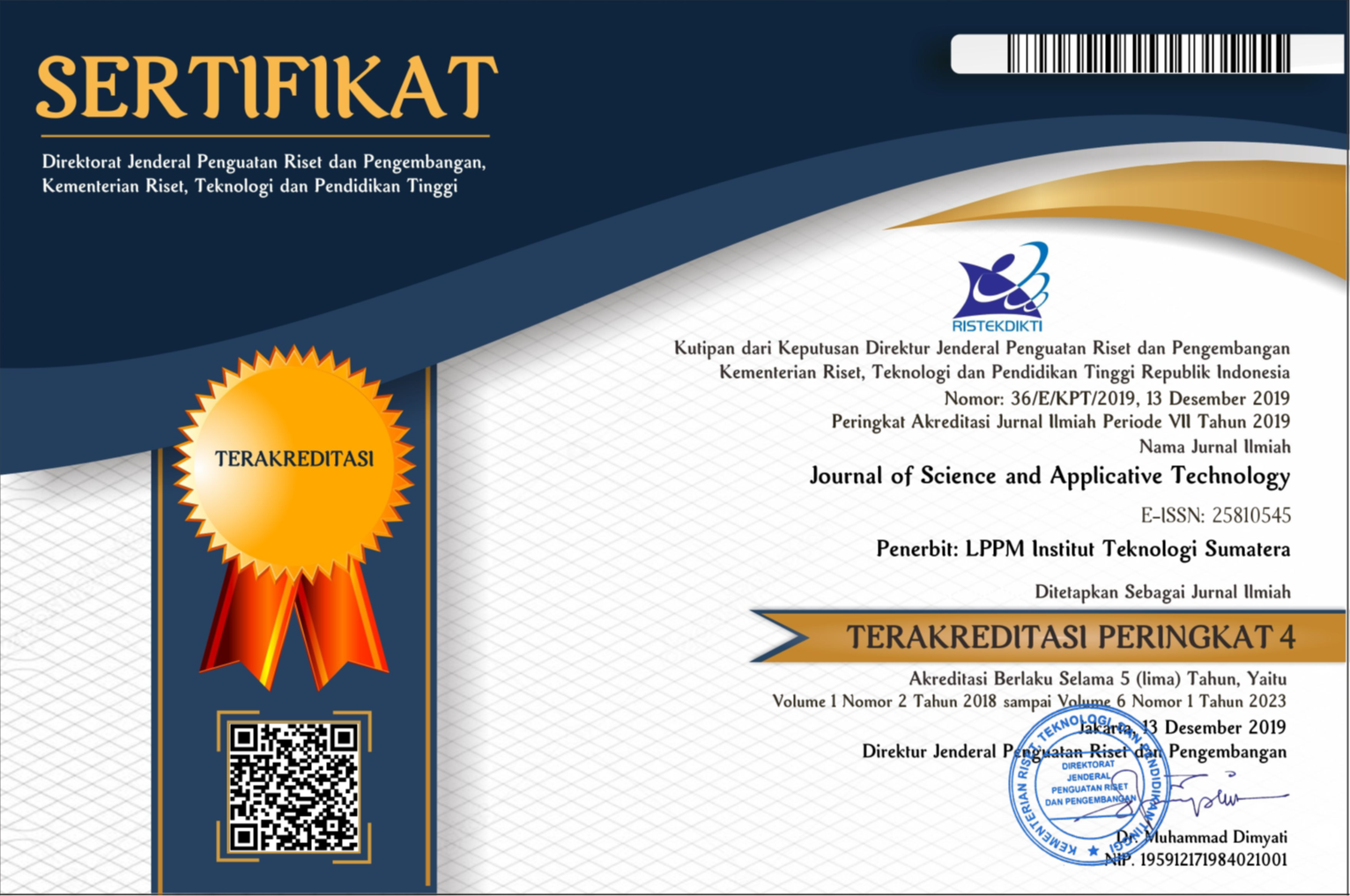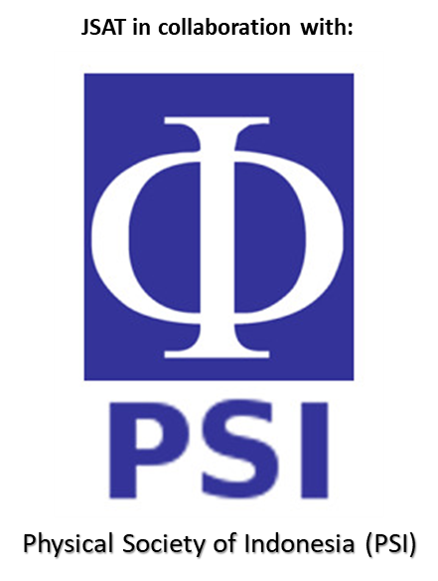Optimasi Multi Respon pada Proses End-Milling Glass Fiber Reinforced Polymer (GFRP) Dengan Menggunakan Metode Back Propagation Neural Network – Particle Swarm Optimization (BPNN-PSO)
Abstract
The use of composite materials continues to show an increasing trend in various fields such as sports, aviation and the military. This also increases the need for knowledge about the manufacturing process of composites. One of the most widely used composite materials is glass fiber reinforced polymer (GFRP). In the process of making components made from GFRP, one of the processes that is often used is end-milling. The studies that have been carried out on the GFRP end-milling process mostly use woven fibers, while research on machining of GFRP using combo fibers has not been widely conducted. This research was conducted to determine the effect of spindle speed, feeding speed, and cutting depth, on cutting forces, surface roughness, and delamination. In addition, multi response optimization is carried out using the combined method of BPNN-PSO to obtain the most optimal combination of machining parameters. The results shows that the optimal level of cut depth, spindle speed, and feeding speed are 1 mm, 4871 rpm and 788 mm / minute, respectively.
Downloads
References
[2] K. Palanikumar, L. Karinamoorthy dan R. Kartikeyan, “Assessment of Factors Influencing Surface Roughness On The Machining of Glass-Fiber Reinforced Polymer Composites,” Materials and Design, vol. XXVII, no. 10, pp. 862-871, 2006.
[3] M. Jenarthanan, S. Ramesh Kumar dan R. Jeyapaul, “Modelling of Machining Force In End-Milling of GFRP Composites Using MRA and ANN,” Australian Journal of Mechanical Engineering, vol. XIV, no. 2, pp. 104-114, 2016.
[4] M. Jenarthanan dan R. Jeyapaul, “Optimization of Machining Parameters of Milling GFRP Composites By Desirability Function Analysis Using Taguchi Method,” International Journal of Science, Engineering, and Technology, vol. V, no. 4, pp. 23-26, 2013.
[5] J. Davim, P. Reis dan C. Antonio, “A Study On Milling of Glass Fiber Reinforced Plastics Manufactured By Hand Lay Up Using Statistical Analysis,” Composite Structures, vol. 64, no. 3, pp. 493-500, 2004.
[6] M. Razfar dan M. Zadeh, “Optimum Damage and Surface Roughness Prediction In End-Milling Glass-Fiber Reinforced Plastics Using Neural Network and Genetic Algorithm,” Proceedings of the Institution of Mechanical Engineers, Part B: Journal of Engineering Manufacture, vol. 223, no. 6, pp. 653-664, 2009.
[7] H. Chibane, R. Serra dan R. Leroy, “Optimal Milling Conditions of Aeronautical Composite Material Under Temperature, Forces, and Vibration Parameters,” Journal of Composite Materials, no. 0021998316687626, 2017.
[8] J. Siang, Jaringan Syaraf Tiruan dan Pemrogramannya Menggunakan MATLAB, Yogyakarta: Penerbit Andi, 2009.
[9] J. Kennedy dan R. Eberhart, “Particle Swarm Optimization,” dalam Proceeding of IEEE International Conference on Neural Networks Vol. 6, 1995.
[10] N. Feito, J. D. Alvarez, J. L. Cantero dan M. H. Miguelez, “Experimental Analysis of the Influence of Drill Point Angle and Wear on The Drilling of Woven CFRPs,” Materials, pp. 4258-4271, 2014.
[11] S. Islam, J. Ramkumar dan A. Milani, “A Simplified Damage Prediction Framework For Milling of Unidirectional Carbon Fiber Reinforced Plastics,” Advanced Manufacturing: Polymer and Composite Science, vol. I, no. 4, pp. 175-184, 2015.
[12] V. Jack, “Advantages and Disadvantages of Using Artificial Nural Networks Versus Logistic Regression For Predicting Medical Outcomes,” Journal of Clinical Epidemiology, vol. 49, no. 11, pp. 1225-1331, 1996.
[13] D. Rini, S. Shamsuddin dan S. Yuhaniz, “Particle Swarm Optimization; Technique, System, and Challenges,” International Journal of Computer Applications, vol. XIV, no. 1, pp. 19-27, 2011.
Copyright (c) 2021 Journal of Science and Applicative Technology

This work is licensed under a Creative Commons Attribution-NonCommercial 4.0 International License.
All the content on Journal of Science and Applicative Technology (JSAT) may be used under the terms of the Creative Commons Attribution-NonCommercial 4.0 International License.
You are free to:
- Share - copy and redistribute the material in any medium or format
- Adapt - remix, transform, and build upon the material
Under the following terms:
- Attribution - You must give appropriate credit, provide a link to the license, and indicate if changes were made. You may do so in any reasonable manner, but not in any way that suggests the licensor endorses you or your use.
- NonCommercial - You may not use the material for commercial purposes.
- No additional restrictions - You may not apply legal terms or technological measures that legally restrict others from doing anything the license permits.





















